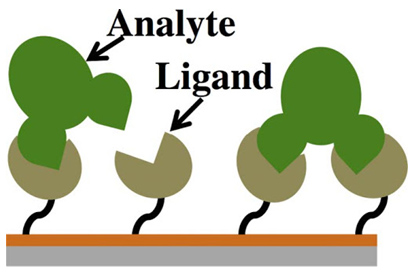
Know your Ligand and provide this information to optimize your biosensor usage time.
Make sure the Analytes are ‘monodispersed’ and as pure as possible, and their concentrations are known.
Controls: identify positive and negative controls.
Running Buffer choice and additives do not replace surfactant addition at 0.05% (polysorbate or Tween®-20).
Analytes are diluted serially, mixing well in each dilution step, in a wide range of concentrations (>100 to 1000-fold) and injected over Ligands in duplicate.
Buffer injections are equal or higher in number than analyte cycles to ‘double reference’ the binding signal.
Before starting, check with us that the instrument is clean or test it yourself by running multiple (10 to 20), short, buffer-only injections or a baseline/injection noise test.